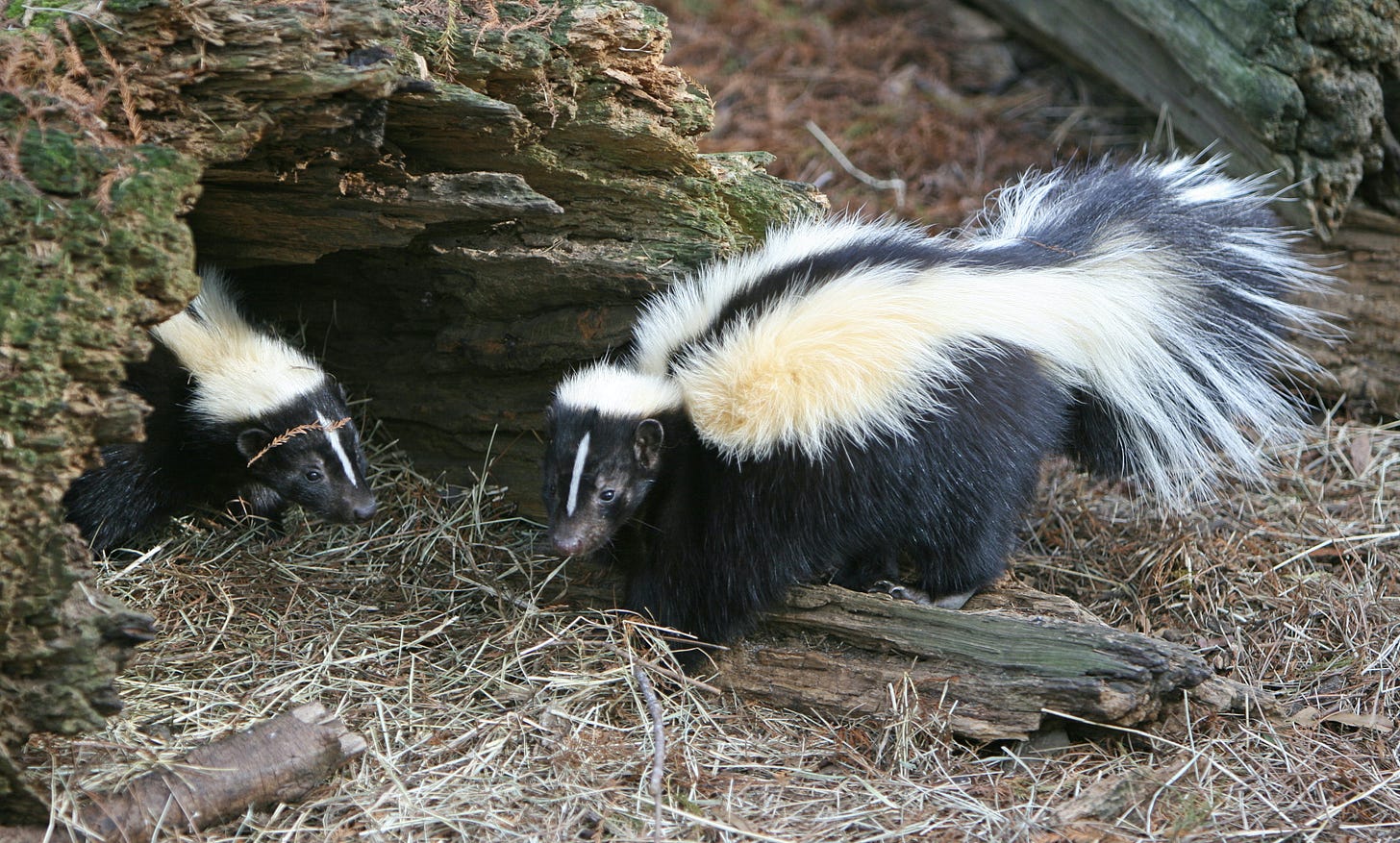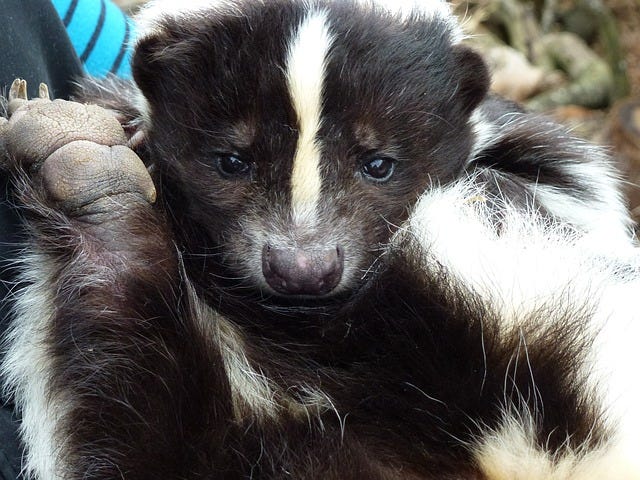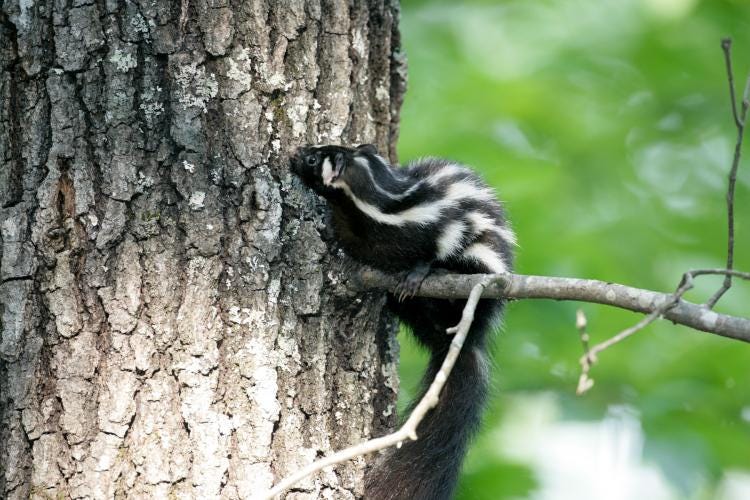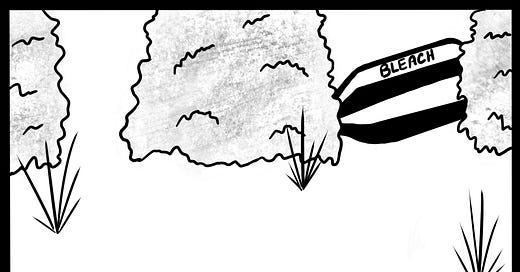Greetings!
Spring is in the air! The birds are having morning and evening concerts. Little green shoots are popping up everywhere. I’d be filled with the hopeful energy of springtime if I wasn’t so darn tired. Thank you so much Daylight Savings Time. Ugh.
Even though they are indoor cats, Max and Jasper are shedding their winter coats. Despite their generous daily brushing (often twice daily, especially for fuzzball Max) there are patches and strands of their light, fluffy fur all over our blankets, carpeting, and clothes. The other day, Max produced a hairball large enough to scare Kola Dog. Such is spring!
Quick Favor
If you enjoy this issue, please click on the heart at the bottom of this message. I love knowing you are out there! ❤️
This Week
I don’t have much to share this week, so allow me to pass along some wisdom from Max and Jasper. At this moment, Jasper is explaining how the food they’ve been fed today sucks. He called my wife from downstairs to come down and remedy the problem. The food was so bad that Max isn’t even going to rise from his nap to see if the situation is being fixed. Jasper wants us to know that just because something was their favorite last week does not mean either of them will even look at it this week. Incidentally, the same thing goes for boxes. The box we received dog food and cat nip in might have been fun last week, but this week, how about one of those nice Amazon boxes?
Full Speed Ahead
What About…?
Skunks

Whether your first reaction to the photo above was closer to “Awww…” or “Ewww” probably depends upon your own experience with skunks. Despite that they are found all over North America (except some very northern areas) and parts of South America, with two types roaming in my state, I’ve rarely seen a skunk and only slightly more often, smelled one. These days, I think it is often cannabis I smell. This means I am in the “Awww…” category of finding them adorable.
There are 15 species of skunks, the most common being striped, spotted, hooded, and hog-nosed. Striped skunks are the most common species in the U.S.
Species range from about 13 to 34 inches (33-86 cm) with their tails accounting for roughly one-third of their length. They weigh from 1.5-13 pounds (0.7-0.63 kg).
Skunks are omnivores - eating insects, plants, small mammals, fruit, carrion, and more. Because they eat vast amounts of crop and garden pests, as well as small rodents, they are very beneficial to have around.
Skunks are excellent examples of a synanthropic species. This means they benefit from living near humans and their alterations to the environment.
Even though they are good to have around, and will not spray unless severely threatened, they are wild animals and should not be approached, especially by your dog who might not heed their warnings and get themselves sprayed.
Striped skunks are not generally climbers, but spotted skunks excel at it. Both live in underground dens, often those made by another animal. They also will make dens among rocks, fallen logs, hollowed-out trees, and deserted buildings.
All skunks have distinctive black and white coats, but the pattern varies among species. It is believed that the patterns are a warning to predators. For example, the striped skunk has white stripes leading directly to its tail, near the glands that shoot their famously stinky oil.
Skunks can accurately spray their scented liquid up to about 12 feet, possibly more. The spray comes from nipples within the anus that they can control with surprising precision. The scent from the spray can stay in the area for up to 3 weeks and be smelled from as far away as 20 miles.
Skunks can release their oil in a mist or a straight stream.
Skunks spray only as a last resort. Their body only holds about 2 teaspoons of the anal liquid, enough for 5-6 consecutive sprays and then it takes them up to two weeks to replenish their supply. When threatened, they give many warnings including hissing, growling, stamping their front feet, and raising their tail before they will spray. Some spotted skunks, considered acrobats, will do a handstand as a warning, showing off their full black-and-white pattern.
Bathing a dog (cat, person, or other beings) in tomato juice to get rid of skunk odor has long been considered a practical remedy. In reality, it only masks the odor, eventually resulting in, “olfactory fatigue.” This means your nose gets so accustomed to the smell it can no longer detect it. Instead, to actually neutralize the odor, use a solution of hydrogen peroxide, baking soda, and mild liquid soap.
Exploring More
What Do Skunks Have to Do with Chicago, Coffee, and Our Future?

Skunks have been around for at least 11 million years, and recent discoveries point to their ancestors having been around up to 40 million years ago. As for interactions with humans, we know that European trading with North American native people began in the 1500s and included skunk pelts.
Skunk became a part of the North American fur industry in the 1800s and became very popular in the 1900s, eventually becoming the most traded fur of the time. Back then, it was marketed as “Alaskan sable,” “American sable,” or “black martin” because those furs were more desirable than “skunk.” In 1951 U.S. Congress passed the “Fur Products Labeling Act” to prevent such deception. Once word got out about the true nature of the fur it quickly dropped in popularity.
When most people think of skunks they immediately associate the animal with its foul-smelling spray. The spray comes from their anal glands and contains a type of chemical compound called a thiol or mercaptan. It is made of hydrogen and sulfur atoms. Ironically, mercaptan is also present in wine, chocolate, and coffee. Not so surprising, it’s also in onions, garlic, and cabbage. Mercaptan, considered to have one of the worst odors on earth, is added to natural gas (which is odorless) so people can more easily detect gas leaks. So, yes, skunk spray stinks but by some miracle of nature is also related to coffee and chocolate.
Skunks were not only important to the fur trade, but it helped Chicago get its name. According to Atlas Obscura, Chicago may have gotten its name from one or more Native American words, including the Miami-Illinois word for a type of smelly wild onion, “shikaakwa,” or an Ojibwe word, “Zhigaagong” meaning “on the skunk.” An Ojibwe historic preservation officer recalls stories of her ancestors traveling from Lake Superior to the mouth of the smelly river during the time of year when young skunks would emerge from their dens. She also explains that her people would trap skunks in order to use their smelly oil as a treatment for pneumonia.
In our current time, skunks have a great deal to teach us. When many of us think of influential skunks, we likely think of famous characters like Flower from Bambi or Pepé Le Pew from the Looney Tunes cartoons. That’s fine for most of us, but according to researchers, some of the most significant skunks are ones from millions of years ago, along with the ones that are thriving right now.
When comparing information from fossils and what we know about current skunk species and their geographic regions, we get hints at how they survived the Ice Age and how they might adapt to current climate change. We might learn things that will help them survive in the future, and possibly even provide insights about our own survival.

Main Resources
National Geographic (Two articles)
Things to do this weekend - enjoy a nap, dance in the sun/rain/clouds/snow, smile at yourself in the mirror. Thanks for reading. I hope you enjoyed learning a bit about skunks.
Peace,
Dakota Duncan






We have lots of skunks but you have to get up before dawn to see them. One year we had kits in our backyard. They give you lots of warnings before spraying and only dogs are stupid enough to get sprayed (lol), my cats have never been sprayed.
From what I have read, they do have a natural musky smell. I suspect, as do others, another reason is that some of the anal gland liquid is likely to end up on the skunk itself after spraying.